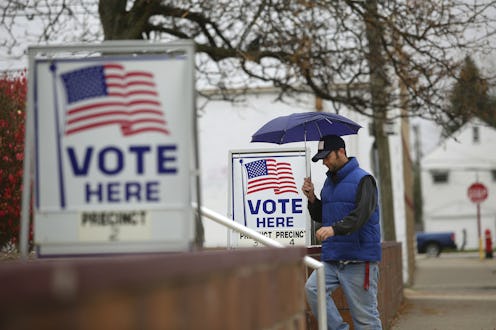News
How Effective Is Mandatory Voting?
The U.S. has low voter turnout, and this week President Obama proposed a remedy — mandatory voting. During a town hall meeting, the president said: "It would be transformative if everybody voted." This isn't a new or revolutionary idea — it's practiced around the globe. Twenty-two countries mandate voting by law. Some have pretty big populations, like Mexico and Brazil. But how effective is mandatory voting? Do people really show up at the polls?
Using the most recent national electoral data (presidential elections used if available) from the Institute of Democracy and Electoral Assistance, let's look at what percentage of the voting age population actually voted in counties with compulsory voting:
- Argentina — 77.35%
- Australia —79.67%
- Belgium — 87.21%
- Bolivia — 90.54%
- Brazil — 74.72%
- Costa Rica — 52.57%
- Democratic Republic of the Congo — 55.56%
- Dominican Republic — 70.21%
- Ecuador — 94.57%
- Egypt — 47.14%
- Greece — 71.91%
- Honduras — 66.31%
- Lebanon — 66.34%
- Luxembourg — 55.12%
- Mexico — 64.58%
- Nauru — 96.81%
- Panama — 80.67%
- Paraguay — 57.96%
- Peru — 86.18%
- Singapore — 55.33%
- Thailand — 39.35%
- Uruguay — 97.14%
The most impressive turnout was in Uruguay with over 97 percent, while Thailand topped at just over 39 percent. The results do vary significantly. Compulsory voting isn't always effective. It can be hard for the elderly or rural dwellers to even get to the polls, bringing down total numbers. But some countries are beginning to account for this, requiring voting only up till a certain age or allowing exceptions for illiterate people.
In comparison, during the 2012 U.S. presidential election 54.62 percent of the voting age population turned out to the polls. Despite being a nation without compulsory voting, the U.S. has managed to out poll three countries with mandatory voting. So what does this tell us? Higher voter turn out doesn't necessarily correlate to what is law.
Historically, 38 countries have once employed compulsory voting as a policy, including the U.S. state of Georgia in 1777. But is this an effective policy practice that works? Looking at the data, probably not. On election day, an individual's choice to participate in the electoral process is what really brings voters to the ballot box, not a law.
Image: Getty Images (1)
